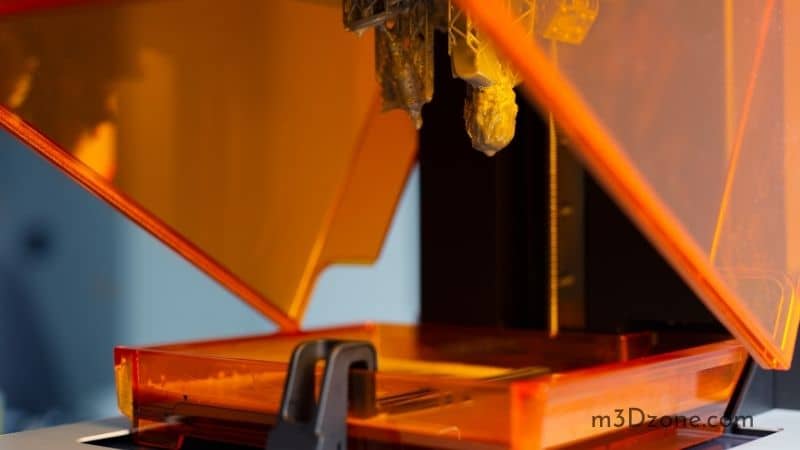3D printing is state-of-the-art technology. Its history dates back to the early 1980s. Dr. Hideo Kodama, a Japanese scientist, is one of the early minds in the development and history of 3D printing. He applied for the first patent in laser beam curing.

Although he was unsuccessful in getting a patent, that marked the start of many inventions and development work in the history of 3D printing. Other scientists gave their best short between 1980 to 1984 but were significantly limited due to lack of funding.
The period between 1984 to 1992 marked real progress in the development history of 3D printing. Three crucial technologies in the history of 3D printing, the SLA, SLS, and FDM, were discovered, leading to 3D printing as we know it today.
Quick Navigation
Are you captivated with the 3D printing technologies and wondering when it started? If you are looking for facts about the history of 3D printing, you are in the right place.
We’ll share the information you need on 3D printing history, so read this article to the end.
When Was 3D Printing Invented?
The history of 3D printing and 3D printing technology, such as additive manufacturing technology, can be traced back to the early 1980s.
-
The Early Inventors (1981-1984)
Dr. Hideo Kodama, a Japanese scientist, became the first person to apply for a patent right for laser beam resin curving, a technology associated with 3D printing as we know it today. The Japanese inventor failed in getting the patent as his application ran out of the stipulated one-year period due to a lack of funds.
Early Inventors in France
Still, Scientists continued to work on the evolving 3D printing technology after the early work done by Hideo Kodama. Thus, the idea of rapid prototyping began to take root.
Le Mehaute, a french scientist working at Alcatel researching fractal geometry parts, wanted to produce those tricky parts. He engaged De Witte, who, as a scientist, was working on lasers. He knew a lot about liquid monomers and how they could be cured to solids using a laser.
The two noble scientists took the idea to Andre, who worked with the French Center for Scientific Research (CNRS) at that time. He bought the picture, but the project collapsed because CMRS failed to fund it.
In 1984, the trio filed for a patent all the same. The three researchers abandoned the project due to a lack of funding.
-
The Invention of Stereolithography (1984-1988)
In 1984, Charles Hull became very frustrated with his inability to make small, custom parts. He worked in a tabletop and furniture manufacturing firm. So, he suggested converting the firm’s UV to cure the photosensitive resin in an additive process.
The company rewarded Hull’s initiative by sparing a small lab to continue with his research on the process.
In 1986, Hull eventually succeeded and applied for his patent terming the technology as ” Stereolithography.” In the same year, he opened a company in California called the 3D system. 3D system remains one of the world’s market leaders for 3D printing technologies up to date.
-
An Era of Rapid Innovations (1988-1992)
Stereolithography – SLA
Charles Hull’s success and subsequent acquisition of a patent right on Stereolithography heralded the 3D printing applications to start using the SLA machine.

His success saw two different 3D printing technologies follow in quick succession.
Selective Laser Sintering – SLS
Another vital 3D printing technology discovery followed the introduction of Selective Laser Sintering in 1988 by Charles Hull. The Selecting Laser Sintering is a 3D manufacturing process that uses a powerful laser to sinter 3D printing material into solid 3D models.
Carl Deckard, a student at the University of Texas, successfully applied for the SLS patents. Deckard’s first SLS printer was named Betsy, and history remembers it for producing only small chunks of plastic.
However, that was not the primary purpose of these 3D printers. The 3D printers tested the idea of SLS additive manufacturing. That discovery proved a big step in the right direction in the history of 3D printing.
Fused Deposition Modeling – FDM
The history of 3D printing indicates that when the SLS patent was awaiting approval, another patent for 3D additive manufacturing technology was submitted to the Government.
Interestingly Fused Deposition Modeling technique is the simplest among the 3D printer’s technologies; it was the last to be invented.
Scott Crump, the Co-founder of Stratasys, a company in 1989, successfully applied for the patent. To date, the Minnesota company remains one of the market leaders in high-tech 3D printers in 3D printing history. Stratasys inc received the patent in 1992.
Who Invented 3D Printing?
The term 3D printing was first used in the early 1980s to refer to the 3D printing process by the early 3D technology inventors.
The history of 3D printing focuses on the scientists who invented the technology and the specific technology they developed. Some of the 3D printing history technologies are Rapid prototyping, Additive process, Stereolithography, Selective Laser Sintering (SLS), and Fused Deposition Modeling.
Here is a list of known inventors in 3D printing history:
-
Hideo Kodama
Dr. Hideo Kodama came from Nagoya Municipal Research Institute in Japan. He published an article that explained how reliable models are fabricated by exposing liquid photos to hardening polymers through ultraviolet rays.
3D printing history shows Dr. Kodama failed to meet the patent requirement due to a lack of funding.
-
Jean Claude Andre, Oliver de Witte, and Alain Mehaute
This team of french scientists was next in line. They, too, pursued 3D printing and made remarkable progress. Their significant contribution was to make actual objects.
They, too, abandoned the project for a perceived lack of commercial viability.
-
Charles Hull
History credits Charles Hull as the inventor of 3D printing technology because he was the first person to successfully obtain a patent. He developed the first Stereolithography 3D printer, the SLA 1. He applied and was awarded a patent by the US government.
His discovery of using concentrated UV light and UV curable plastic filaments to produce three-dimensional parts from a computer file remains remarkable.
-
Emmanuel M. Sachs, John S. Harggerty, Michael J. Chim and Paul A.Williams
This team of researchers is credited for inventing the binder jet printing. The binder jet uses inkjet printing to apply adhesive binder to successfully layer powder selectively. It remains the first 3D printer technology that uses inkjet in the history of 3D printing models.
They got credited with the innovation in 3D systems that enabled 3D printing with different kinds of material like plastic, metal, sand, and ceramic.
-
Scott Crump
Scott Crump is the researcher who invented the 3D printer that most 3D printer users would easily recognize today. He discovered the FDM 3D printing techniques. This 3D printing technique enables a 3D print to be created by people using 3D printing materials. You create 3D objects through the layering of the hot filaments that come out of the 3D printer nozzle and you have to let it cool.
He equally invented the breakaway and soluble support that allows FDM undercuts and hollow designs.
-
Carl Deckard
He invented using a laser beam to sinter tiny particles of powder, layer by layer, to create a 3D substantial part. Therefore, he was credited for inventing the Selective Laser Sintering.
-
Adrian Bowyer
Dr. Adrian Bowyer was the mastermind behind discovering the open-source 3D printers that can manufacture 3D prints or objects from their components.
Where Was the First 3D Printer Made?
In 1981, Dr. Hideo invented the first documented iterations of 3D printing as people know it today in Nagoya Municipality in Japan. In developing a rapid prototyping system, he discovered the layer-by-layer approach used in manufacturing 3D products.
Although he couldn’t get a patent for his work, many people recognize him as the original inventor of 3D printing.
3D Printing in the Late 1980s
The history of 3D printing finds its base in the 1980s. Here is a summarized catalog of the historical events of 3D printing in the late 1980s.
-
1986
After several unsuccessful attempts by the pioneers of 3D printing in the early 1980s, Charles Hull took over the work on Stereolithography and completed it successfully. He later earned his patent for this marvelous work.
-
1988
The year 1988 marked the invention of the SLA-1, 3D printers. The SLA-1 3D printer invention in 1988 was followed closely by the discovery of the SLS machine. These machines were produced and taken to the 3D printing marketplace by DTM Inc in 3D object manufacturing.
When 3D Printing First Became Popular
3D printing history suggests that 3D printers and 3D printed objects became popular since their inception in the 1980s. The early popularity of the 3D printers was among various industries as it offered rapid prototyping of industrial products.
The technology was quick and cost-effective, offering an affordable price to 3D manufactured objects and designs.
When you consider the growth of 3D additive manufacturing processes’ popularity, you can put them into three categories.
-
Infancy Stage: 1981-1999
During this period, 3D technology and its products or 3D models were at the infancy stage. Only a few industries knew about 3D printing methods and 3D printers.
-
Adolescence Stage: 1999-2010
1999-2010 fits the bill of the adolescence stage in the history of 3D printing.
The popularity of the 3D printing processes gained momentum and was applied in most industries and professions.
But a lot of work was still going on to improve the new technology.
-
Adult Stage: 2011 to Date [In The History of 3D printing]
Without a doubt, innovation covered in recent times adds value to 3D technology. For instance, a 3D systems company provides three-dimensional 3D printing solutions to people.
Its state of the art 3D printing services has endeared it to 3D printing hobbyist.
The open-source movement encourages the use of 3D printers, as Sanders prototype proved in its pursuit to get leadership CAD tools usage at home and amongst other industry players.
Some people say the 3D technology is currently at its peak, while others claim that a lot is yet to come out of the 3D printer technology.
Conclusion
3D printing history shows that researchers keep improving technology bit by bit over the years, from Dr. Hideo Kodama, who initiated the 3D technology, to Adrian Bowyer, the mastermind behind open-source 3D technology progression.
3D industry players believe that the technology is far from being fully exploited, and the world should expect to see more advancement on this front.
Recommended Reading
How to Convert STL to Gcode for 3D Printing
Easy guide to convert STL to Gcode. Open the STL file in a slicer to begin the slicing process. Adjust the parameters to meet your needs, scale, and ...
PVA Filament. What Is It and What Is It Used For?
PVA filament is a biodegradable polymer that remains sensitive to moisture. Comes as a support material and its chemical properties make it soluble.
How to Prevent PLA Warping. Useful Tips & FAQ’s.
Is PLA warping weighing down your 3D prints and destroying all the effort you put into? This post will help you identify the causes and how to overcome them.
